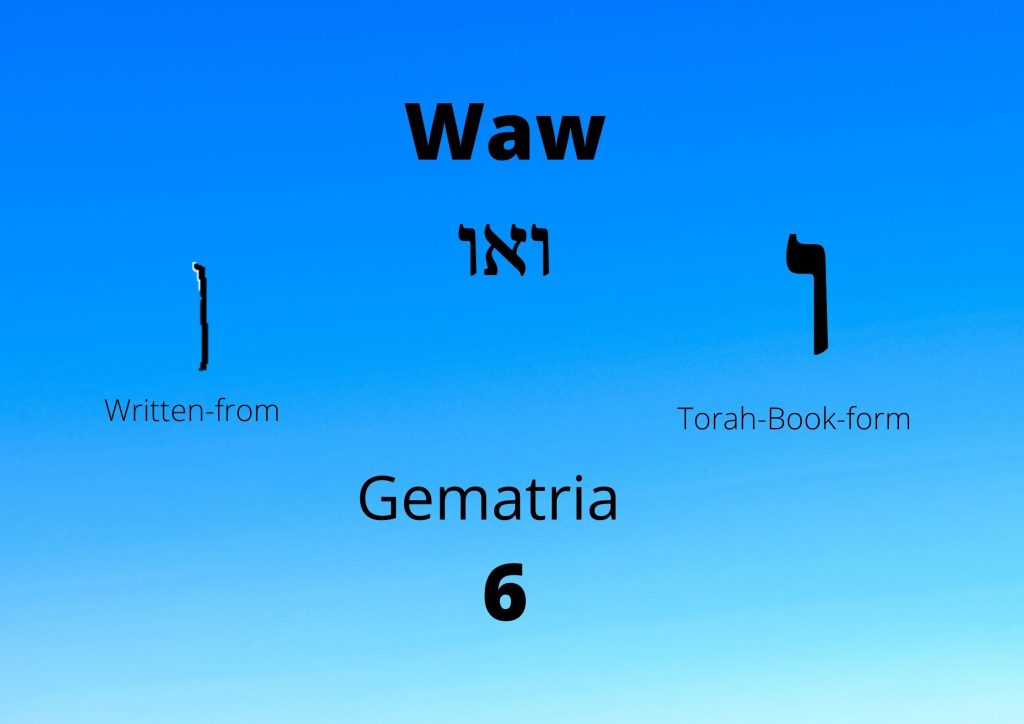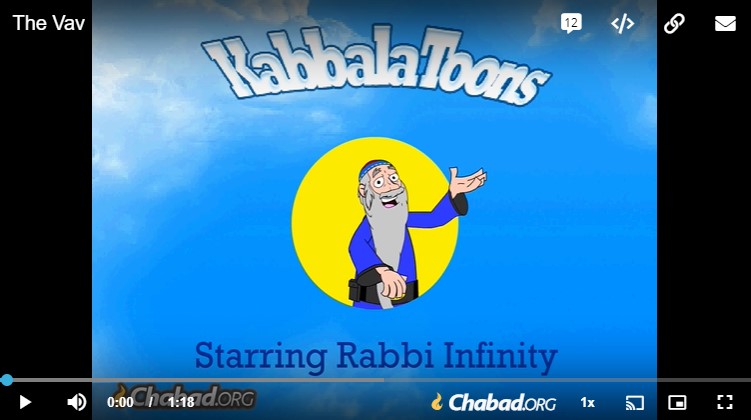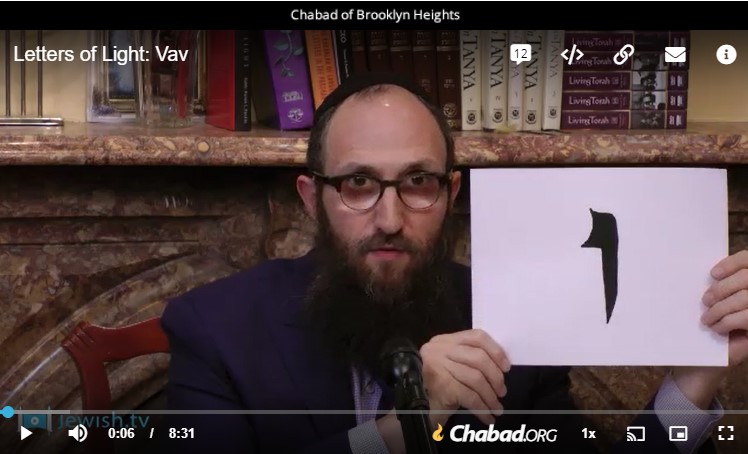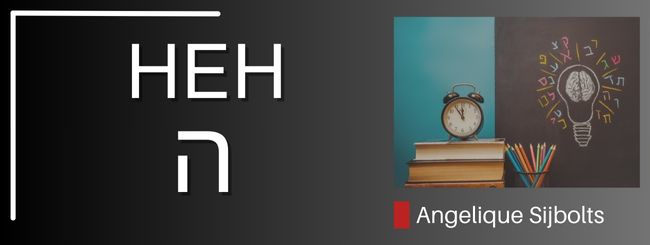
Let’s look at the Waw/ Vav ו
The waw has the sound “w” as in “way”.
The gematria is 6.
A first association we can make is with the 6 days of creation. It took 6 days to sheep this physical world. Man was created on the 6th day and experiences this created world in 6 dimensions: left, right, front, back, top and bottom. Man was created from the dust of the earth – the physical world and received the breath of life – the spiritual world – from G-d. Man is the link between the spiritual world and the physical world. This is also the meaning of the waw, a ladder/a hook that connects upstairs and downstairs.
A human being has to make the connection between this physical world and the spiritual world. But man cannot make that connection himself. He is only able to do so if he does so through the Torah that teaches him how to make that connection. For the Torah itself is also that ladder/that hook that makes that connection, a connection from top to bottom, a Yud, which is pulled down, and then appears as the Waw.
When we study Torah, the 7 Noahide Laws, we learn what the truth is. Truth helps us get to know G-d better, who is the Truth, but it also helps us make good choices in life. Torah and Truth are equal to each other. When we add up all the letters of the Alephbeth up to and including the Waw (אבגדהו), we get the number 21. If we multiply 21 by 21 we get the number 441, which is the numerical value of אמת truth. When we connect ourselves with truth then we experience gladness.
Rabbi Levi Yitzzchak of Berditchev teaches us through Genesis 28:21 that the Hebrew word implies gladness:
וְהָיָ֧ה יְהֹוָ֛ה לִ֖י לֵאלֹהִֽים
And Hashem will be a G-d to me.
Jakob first prayed for food and clothing so that he could then more readily look forward to his relationship with G-d. Without material worries, one can more easily serve G-d joyfully. [1]
The above example shows another good connection the waw makes. Namely, the connection between the past and the future. היה is the past tense but with the ו in front of it, it becomes a future tense.
In addition, the waw is the worod ‘and’. It connects everything that was said or written before with everything that comes after.
The waw is not always pronounced as a “w”. It can also be used as an auxiliary letter. When written with a dot above it, וֹ it is an “o” sound. When written with a dot in the middle, וּ it is pronounced as a “u” – sound.
We are now familiar with the:
ו ב י ת א ל פ ף ג מ ם ד ה
and with the:
ִ וֹ וּ ּ ֶ ָ ַ ֵ ֹ
and can now read the following words, among others:
Genesis 1:13
וַֽיְהִי־עֶ֥רֶב וַֽיְהִי־בֹ֖קֶר י֥וֹם שְׁלִישִֽׁי׃
And there was evening and there was morning, a third day.
Genesis 4:4
וְהֶ֨בֶל הֵבִ֥יא גַם־ה֛וּא מִבְּכֹר֥וֹת צֹאנ֖וֹ וּמֵֽחֶלְבֵהֶ֑ן וַיִּ֣שַׁע יְהֹוָ֔ה אֶל־הֶ֖בֶל וְאֶל־מִנְחָתֽוֹ׃
and Abel, for his part (litt. he also) , brought the choicest of the firstlings and of his flock. יהוה paid heed to Abel and his offering,
Genesis 5:3
וַֽיְחִ֣י אָדָ֗ם שְׁלֹשִׁ֤ים וּמְאַת֙ שָׁנָ֔ה וַיּ֥וֹלֶד בִּדְמוּת֖וֹ כְּצַלְמ֑וֹ וַיִּקְרָ֥א אֶת־שְׁמ֖וֹ שֵֽׁת׃
When ( and it came to pass) Adam had lived 130 years, he begot a son in his likeness after his image, and he named him Seth.
To hear the texts, see youtube below


By Angelique Sijbolts
Sources: [1] The Wisdom in the Hebrew Alphabet p. 97, habadVideo, The Wisdom in the Hebrew Alphabet Grammatica vh Bijbels Hebreeuws by E. Lettinga, Grammar For Biblical Hebrew by C. Seow, Mamre
© Copyright, all rights reserved. If you enjoyed this article, we encourage you to distribute it further.
